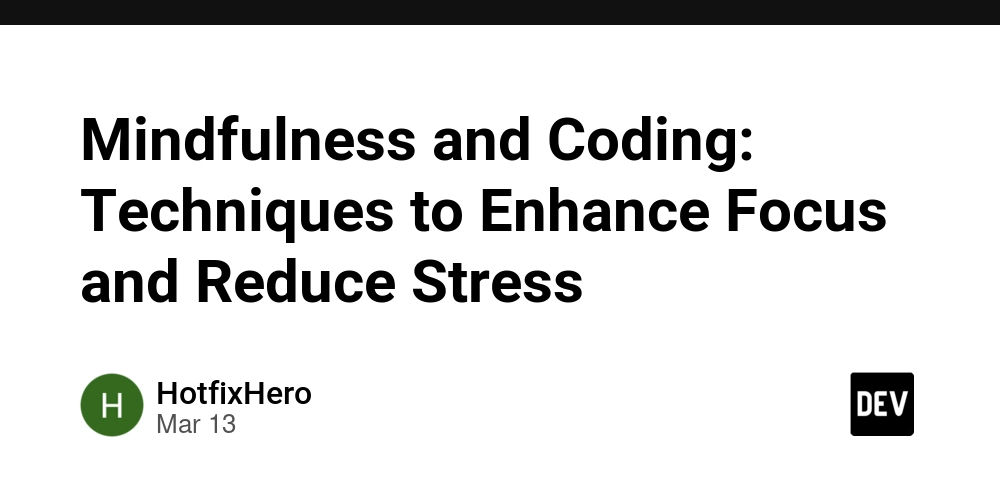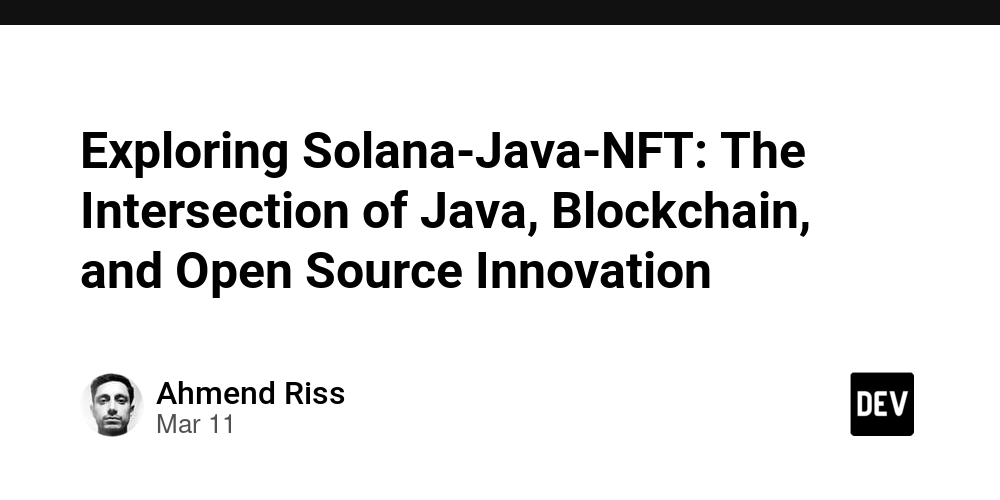Mindfulness and Coding: Techniques to Enhance Focus and Reduce Stress
Let’s be honest—most developers have the attention span of a goldfish on caffeine. Between Slack notifications, never-ending Jira tickets, and that one PM who insists on “just a quick call,” staying focused feels like an impossible task. Add in tight deadlines and late-night debugging sessions, and you’ve got a perfect recipe for stress. So, what’s the fix? Mindfulness. Now, before you roll your eyes and assume I’m about to suggest quitting your job to meditate in a forest, hear me out. Mindfulness isn’t about chanting mantras while sitting cross-legged—it’s about training your brain to focus, reducing stress, and stopping your mind from spiraling when production inevitably catches fire. Here’s how you can integrate mindfulness into your coding life without looking like a yoga instructor lost in a tech office. The 5-5-5 Breathing Rule (Because Debugging Shouldn’t Require CPR) When your code isn’t working and your stress levels hit critical mass, try this: Inhale for 5 seconds Hold for 5 seconds Exhale for 5 seconds Repeat a few times, and boom—your brain gets a reset. This little trick calms your nervous system and stops you from rage-punching your keyboard. When to use it: Right before you dive into that 500-line legacy function that hasn’t been touched since 2012. Single-Tasking: Because Multitasking is a Lie Developers love to believe they can handle 17 things at once. Reality check: You can’t. Multitasking is just rapid context-switching, and it’s killing your focus. Instead, try single-tasking. Close unnecessary tabs, mute notifications, and commit to finishing one thing at a time. Your brain (and your code quality) will thank you. When to use it: When you’re bouncing between writing a PR, answering DMs, and somehow also listening to a standup meeting. Code Like a Monk: The Pomodoro Technique The Pomodoro Technique is simple: 1. Work for 25 minutes (fully focused, no distractions). 2. Take a 5-minute break. 3. Repeat. This technique forces you to stay in the zone without burning out. Plus, those five-minute breaks? Perfect for stretching, hydrating, or contemplating why CSS is the way it is. When to use it: When you realize you’ve been staring at the same bug for an hour and getting nowhere. The Art of Logging Off (Yes, Really) Here’s a wild idea: Step away from the screen. I know, blasphemy. But taking intentional breaks—going for a walk, stretching, or even just looking out the window—helps reset your brain. Mindfulness is about being present, and sometimes that means being present away from your code. When to use it: When you’ve rewritten the same function three times and it’s still broken. The Debugging Mindset: Observe, Don’t React Mindfulness teaches you to observe your thoughts without immediately reacting. Apply this to coding: Instead of panicking when something breaks, step back and analyze it calmly. Instead of cursing past-you for writing terrible code, figure out why it was written that way. Approach problems like a scientist, not an emotional wreck. Your brain (and your teammates) will appreciate it. When to use it: When you’re knee-deep in a spaghetti-code nightmare and considering a new career. Final Thoughts Mindfulness isn’t just some hippie nonsense—it’s a practical way to code better, stress less, and avoid burnout. By making small changes to how you work and approach problems, you can boost focus, improve productivity, and maybe, just maybe, survive your next sprint with your sanity intact. So take a deep breath, focus on one task at a time, and remember: your job is to fix bugs, not become one.

Let’s be honest—most developers have the attention span of a goldfish on caffeine. Between Slack notifications, never-ending Jira tickets, and that one PM who insists on “just a quick call,” staying focused feels like an impossible task. Add in tight deadlines and late-night debugging sessions, and you’ve got a perfect recipe for stress.
So, what’s the fix? Mindfulness.
Now, before you roll your eyes and assume I’m about to suggest quitting your job to meditate in a forest, hear me out. Mindfulness isn’t about chanting mantras while sitting cross-legged—it’s about training your brain to focus, reducing stress, and stopping your mind from spiraling when production inevitably catches fire.
Here’s how you can integrate mindfulness into your coding life without looking like a yoga instructor lost in a tech office.
- The 5-5-5 Breathing Rule (Because Debugging Shouldn’t Require CPR)
When your code isn’t working and your stress levels hit critical mass, try this:
- Inhale for 5 seconds
- Hold for 5 seconds
- Exhale for 5 seconds
Repeat a few times, and boom—your brain gets a reset. This little trick calms your nervous system and stops you from rage-punching your keyboard.
When to use it: Right before you dive into that 500-line legacy function that hasn’t been touched since 2012.
- Single-Tasking: Because Multitasking is a Lie
Developers love to believe they can handle 17 things at once. Reality check: You can’t. Multitasking is just rapid context-switching, and it’s killing your focus.
Instead, try single-tasking. Close unnecessary tabs, mute notifications, and commit to finishing one thing at a time. Your brain (and your code quality) will thank you.
When to use it: When you’re bouncing between writing a PR, answering DMs, and somehow also listening to a standup meeting.
- Code Like a Monk: The Pomodoro Technique
The Pomodoro Technique is simple:
1. Work for 25 minutes (fully focused, no distractions).
2. Take a 5-minute break.
3. Repeat.
This technique forces you to stay in the zone without burning out. Plus, those five-minute breaks? Perfect for stretching, hydrating, or contemplating why CSS is the way it is.
When to use it: When you realize you’ve been staring at the same bug for an hour and getting nowhere.
- The Art of Logging Off (Yes, Really)
Here’s a wild idea: Step away from the screen. I know, blasphemy. But taking intentional breaks—going for a walk, stretching, or even just looking out the window—helps reset your brain.
Mindfulness is about being present, and sometimes that means being present away from your code.
When to use it: When you’ve rewritten the same function three times and it’s still broken.
- The Debugging Mindset: Observe, Don’t React
Mindfulness teaches you to observe your thoughts without immediately reacting. Apply this to coding:
- Instead of panicking when something breaks, step back and analyze it calmly.
- Instead of cursing past-you for writing terrible code, figure out why it was written that way.
Approach problems like a scientist, not an emotional wreck. Your brain (and your teammates) will appreciate it.
When to use it: When you’re knee-deep in a spaghetti-code nightmare and considering a new career.
Final Thoughts
Mindfulness isn’t just some hippie nonsense—it’s a practical way to code better, stress less, and avoid burnout. By making small changes to how you work and approach problems, you can boost focus, improve productivity, and maybe, just maybe, survive your next sprint with your sanity intact.
So take a deep breath, focus on one task at a time, and remember: your job is to fix bugs, not become one.










































































































































































![[The AI Show Episode 142]: ChatGPT’s New Image Generator, Studio Ghibli Craze and Backlash, Gemini 2.5, OpenAI Academy, 4o Updates, Vibe Marketing & xAI Acquires X](https://www.marketingaiinstitute.com/hubfs/ep%20142%20cover.png)



























































































































![[FREE EBOOKS] The Kubernetes Bible, The Ultimate Linux Shell Scripting Guide & Four More Best Selling Titles](https://www.javacodegeeks.com/wp-content/uploads/2012/12/jcg-logo.jpg)



![From drop-out to software architect with Jason Lengstorf [Podcast #167]](https://cdn.hashnode.com/res/hashnode/image/upload/v1743796461357/f3d19cd7-e6f5-4d7c-8bfc-eb974bc8da68.png?#)






































































































.png?#)




.jpg?#)































_Christophe_Coat_Alamy.jpg?#)








































































































![Rapidus in Talks With Apple as It Accelerates Toward 2nm Chip Production [Report]](https://www.iclarified.com/images/news/96937/96937/96937-640.jpg)









































































































































